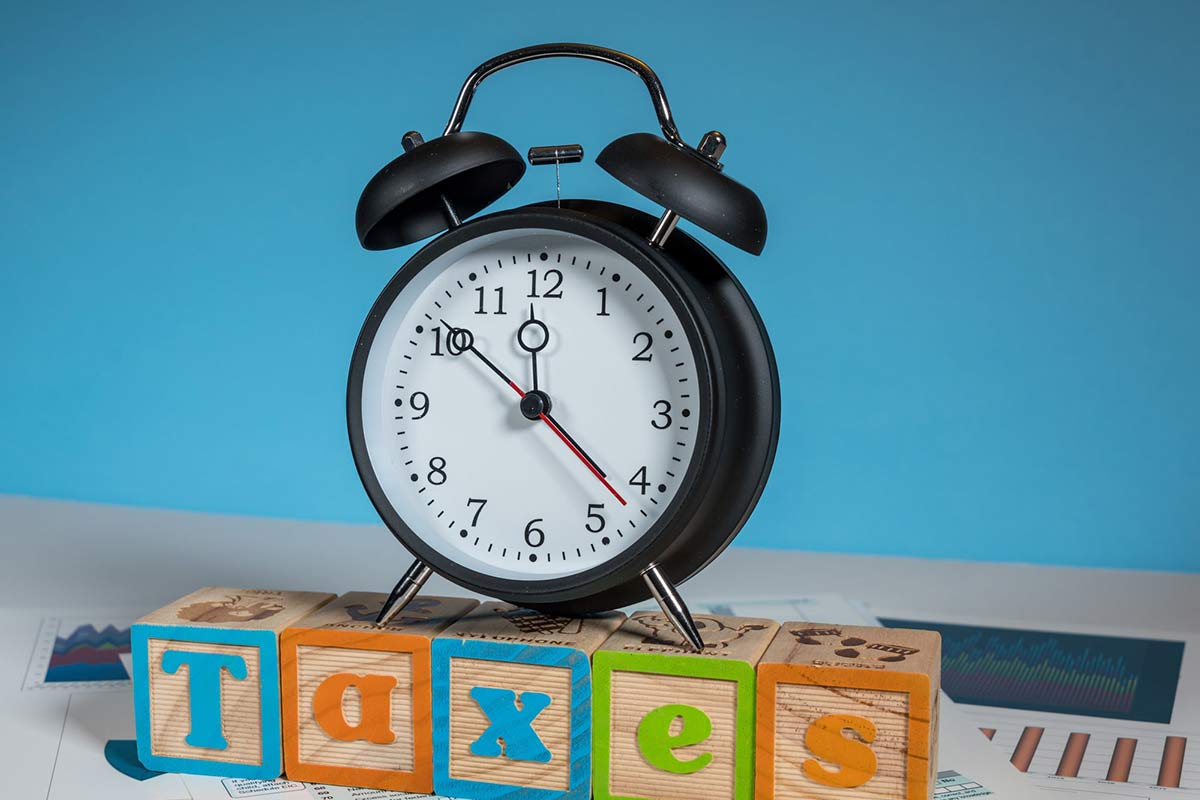Last Updated on April 13, 2025


Tax season is upon us, and for many Canadians, this time of year can bring a mix of stress and confusion. But filing your taxes doesn’t have to be overwhelming. Whether you’re a first-time filer or an experienced taxpayer, understanding the process can make a significant difference. In this guide, we’ll break down everything you need to know about how to file taxes in Canada.
| QUICK LINKS | |
|---|---|
| Understanding the Canadian Tax System | Key Tax Deadlines |
| Steps to File Your Taxes | Tips for a Smooth Tax Filing Process |
| More Tax Filing FAQs |
Understanding the Canadian Tax System
Before diving into the specifics of filing your taxes, it’s essential to understand the basics of the Canadian tax system.
What is Income Tax?
Income tax is a tax that individuals and businesses pay on their income. In Canada, income tax is levied by both the federal and provincial governments.
Key Tax Forms and Documents
- T4 Slip: Issued by your employer, it summarizes your annual earnings and deductions.
- T5 Slip: For investment income, such as dividends and interest.
- RRSP Contribution Receipt: Shows your contributions to a Registered Retirement Savings Plan.

ICYDK
The terms T1, T2, T3, T4, and T5 refer to different tax forms used in Canada:
- T1: The T1 General is the personal income tax return form used by individuals to report their income and calculate their taxes.
- T2: The T2 Corporation Income Tax Return is used by corporations to report their income and calculate their taxes.
- T3: The T3 Trust Income Tax Return is used by trustees to report the income and expenses of a trust.
- T4: The T4 Statement of Remuneration Paid is used by employers to report the income paid to employees and the deductions made.
- T5: The T5 Statement of Investment Income is used to report certain types of investment income paid to Canadian residents or their nominees.
These forms are essential for reporting income and ensuring compliance with Canada Revenue Agency (CRA) regulations.
Steps to File Your Taxes
Step 1: Gather Your Documents
The first step in filing your taxes is gathering all necessary documents. This includes your T4 slips, receipts for deductions, and any other relevant documents. Organizing these documents throughout the year can make this step much easier. Here are some common documents you’ll need:
- T4 Slip: This form, provided by your employer, details your annual earnings and deductions.
- T5 Slip: Issued for investment income such as dividends and interest.
- RRSP Contribution Receipts: Document your contributions to a Registered Retirement Savings Plan.
- Medical Expense Receipts: Keep receipts for any eligible medical expenses you plan to claim.
- Charitable Donation Receipts: Ensure you have receipts for any charitable donations made throughout the year.
- Business Expense Receipts: For self-employed individuals, keep detailed records of business-related expenses.
Staying organized can save you time and reduce stress when tax season arrives. Consider using a filing system or digital app to keep track of these documents throughout the year.
Step 2: Choose Your Filing Method
Next, decide how you will file your taxes. In Canada, you have several options:
- Online Filing: Using certified tax software is the most popular and efficient method. Many software options are available, including free versions for simple returns.
- Paper Filing: If you prefer, you can complete your tax return on paper and mail it to the Canada Revenue Agency (CRA). Be sure to use the correct forms, which can be downloaded from the CRA website.
- Tax Professional: Hiring a tax professional or accountant can be beneficial, especially if your tax situation is complex. They can provide personalized advice and ensure your return is accurate.
Each method has its advantages. Online filing is typically faster and allows for quicker processing of refunds. Paper filing may be preferred by those who are less comfortable with technology. Hiring a professional can provide peace of mind and expertise.
Step 3: Complete Your Return
Completing your tax return accurately is crucial. Here’s a detailed look at each method:
- Online Filing: Most Canadians file their taxes online using certified tax software. These programs guide you through the process step-by-step, ensuring you don’t miss any important details. The software can calculate your taxes, check for errors, and even submit your return electronically to the CRA. Some popular options include TurboTax, H&R Block, and UFile.
- Step-by-Step Guidance: Tax software provides a user-friendly interface and prompts you to enter necessary information.
- Error Checking: Built-in error checking helps identify potential issues before submission.
- Instant Submission: Once completed, your return is submitted electronically to the CRA, speeding up processing times.
- Paper Filing: If you prefer a more traditional approach, you can download the necessary forms from the CRA website and complete them by hand. Be sure to use the correct forms and double-check your calculations. Once completed, mail your return to the appropriate CRA office.
- Download Forms: Obtain the latest tax forms from the CRA website.
- Manual Calculation: Carefully calculate your income, deductions, and credits.
- Mail Submission: Send your completed return to the CRA by mail.
- Tax Professional: If you have a complex tax situation, such as owning a business or having multiple income sources, it may be beneficial to hire a tax professional. They can provide expert advice, identify potential deductions, and ensure your return is accurate. Provide your tax professional with all necessary documents and answer any questions they may have.
- Personalized Advice: A tax professional can offer tailored advice based on your specific situation.
- Accuracy: Professional preparation helps minimize errors and potential audits.
Complex Situations: Ideal for individuals with complex tax scenarios, such as multiple income sources or business ownership.
Step 4: Submit Your Return
Submitting your tax return by the deadline is crucial to avoid penalties. For most individuals, the deadline is April 30th. If you or your spouse or common-law partner are self-employed, you have until June 15th to file your return. However, any balance owing must still be paid by April 30th to avoid interest charges.
- Online Submission: If filing online, your return will be submitted electronically to the CRA. You will receive a confirmation number once your return is successfully submitted.
Mail Submission: If filing by mail, ensure your return is postmarked by the deadline to avoid late penalties. It’s a good idea to use a traceable mail service for peace of mind.
Step 5: Pay Any Owed Taxes
If you owe taxes, it’s important to pay the amount due by the deadline to avoid penalties and interest charges. The CRA offers several payment options:
- Online Banking: Most financial institutions allow you to make payments directly to the CRA through online banking.
- CRA My Payment: This is an online payment service that allows you to make payments directly to the CRA using your bank account.
- Credit Card: You can also use a third-party service provider to pay by credit card, though this may involve additional fees.
Cheque or Money Order: Payments can be made by mailing a cheque or money order to the CRA. Include your Social Insurance Number (SIN) on the payment to ensure it is applied to your account.
Key Tax Deadlines
Understanding and adhering to key tax deadlines is essential to avoid penalties. Here are the primary deadlines to keep in mind:
- April 30: Deadline for most individuals to file their tax return and pay any taxes owed.
- June 15: Deadline for self-employed individuals to file their tax return. However, any balance owing must be paid by April 30.
- March 1: Deadline for contributing to an RRSP for the previous tax year.
Tips for a Smooth Tax Filing Process
- Stay Organized: Keeping your tax documents organized throughout the year can significantly ease the filing process. Use a filing system or digital tools to track receipts, forms, and other important documents.
- Use Tax Software: Certified tax software can guide you through the process and help you avoid errors. These programs often include features like error checking, automatic calculations, and electronic submission.
- Seek Professional Help: If your tax situation is complex, consider seeking help from a tax professional. They can provide personalized advice, identify potential deductions, and ensure your return is accurate.
- Start Early: Starting early can reduce stress and give you plenty of time to gather documents and seek help if needed. Don’t wait until the last minute to begin your tax filing.
- Review Your Return: Before submitting your return, review it carefully to ensure all information is accurate and complete. Double-check calculations and verify that all necessary documents are included.

More Tax Filing FAQs
In addition to the information above, the most commonly asked questions on the topic of Tax filing are found below.
In Conclusion
Filing taxes in Canada doesn’t have to be stressful. By following these steps and staying organized, you can ensure a smooth tax filing process. Remember, the key is to start early and seek help if needed. Happy filing!
Statistics and Information Sources:
- Government of Canada website
- Link: https://www.canada.ca/en/services/taxes/income-tax/personal-income-tax/get-ready-taxes.html






